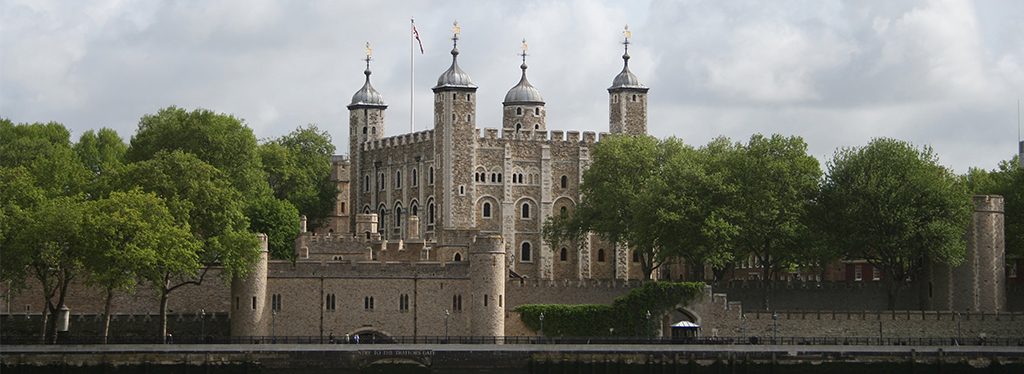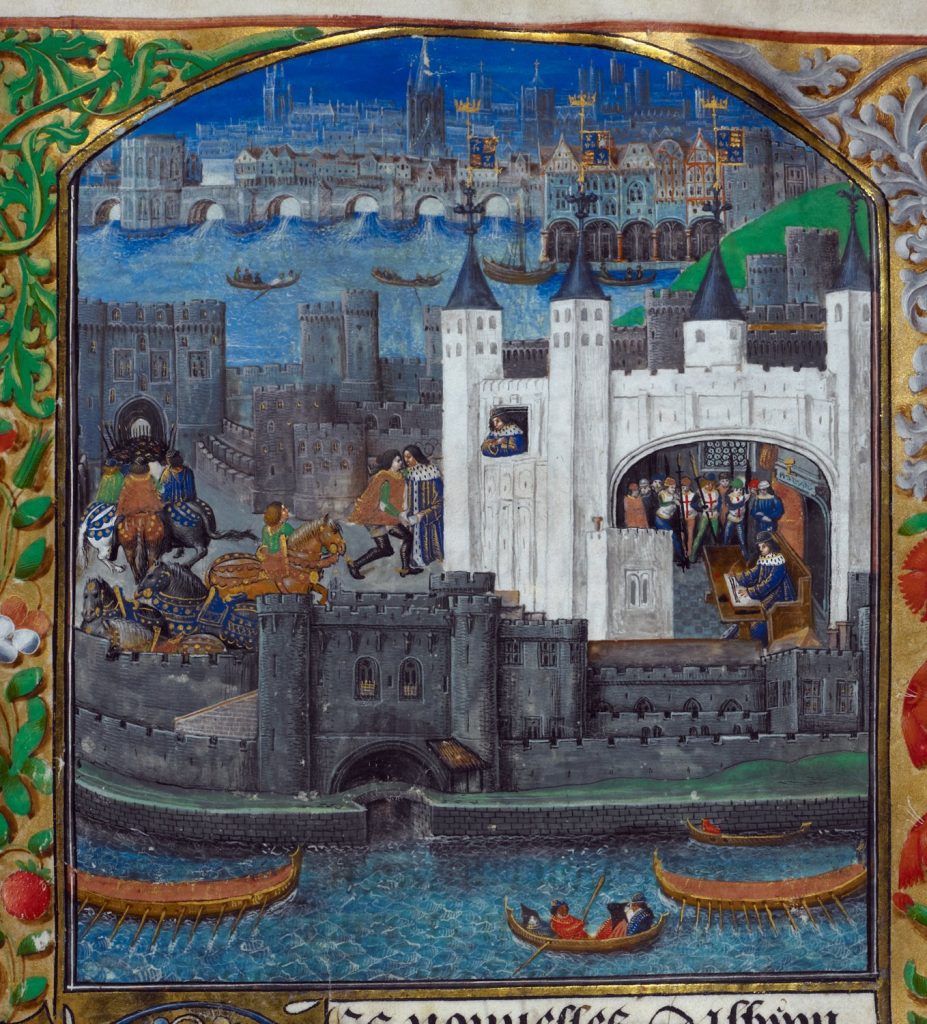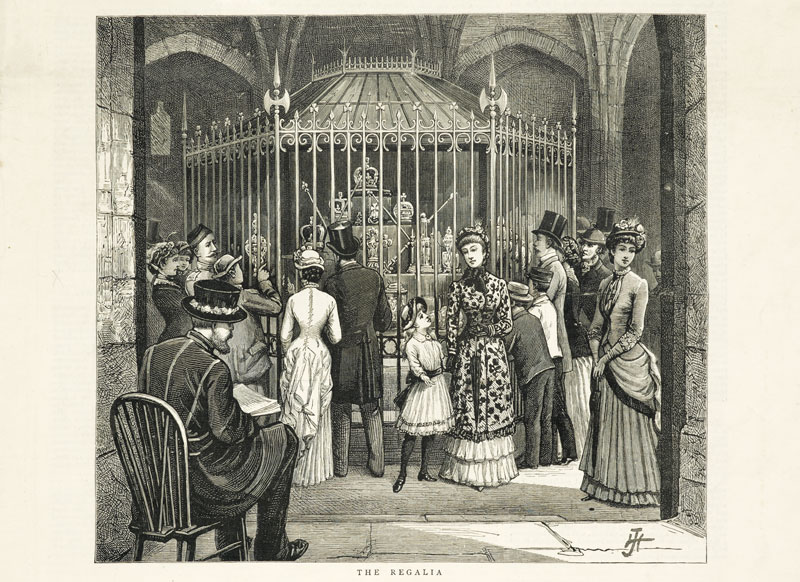Her Majesty’s Royal Palace and Fortress of the Tower of London, or just the Tower of London, now a tourist attraction, was once home to the Royal Family of England and many imprisoned in the tower. Originally built in 1078, it is still standing today in London, England. In 2015, the tower experienced over 2.7 million visitors!
Duke of Normandy, William the Conqueror, had ordered the castle to be built before entering London in 1066. The exact date of when construction on the White Tower began is unknown, though it is believed to have been around 1078. While many castles were built of wood, The Tower of London was one of the few during the 11th century to be built of stone. It is also unknown as to when the castle was finished being built, perhaps before William’s death in 1087, but 1100 at the latest. A stone wall had been built surrounding the castle in 1097. Bishop Ranulf Flambard was the first recorded prisoner and escapee of the Tower in 1100.
During the reign of Richard the Lionheart, William Longchamp, his Lord Chancellor, was put in charge of the Tower while Richard was on crusade. Longchamp quickly got to work on expanding and strengthening the Tower. The Bell Tower and Wardrobe Tower were both built beginning in 1190, but The Wardrobe Tower finished in 1199, and the Bell in 1210. That October, Richard’s brother, Prince John, surrounded the Tower for the first time since it had been built. After three days, Longchamp surrendered and gave the Tower to John.
John had begun his reign in 1199, but remained unpopular until his death. Many of John’s barons tried to make moves against him. Once again, the Tower was sieged in 1214, but this time it was led by Robert Fitzwalter. When John signed the Magna Carta in 1215, the siege on the Tower was lifted. Fitzwalter still remained in control of London though. The in 1216, John was deposed during the First Barons’ War, and died later that year. Until John’s son, Henry, was placed on the throne, Fitzwalter controlled London and the Tower.
The Tower was expanded when Henry III began his rule over England. Around 1220, Henry added Wakefield Tower and Lanthorn Tower. A new curtain wall was constructed in 1238 and many more towers were added, the Bloody Tower (originally Garden Tower), Broad Arrow Tower, Constable Tower, Martin Tower, Brick Tower, Flint Tower, Salt Tower, Bowyer Tower, and Devereux Tower. Later, Henry had an Elephant House built in 1255 for an Elephant the French king had gifted him. He also had his animals from another menagerie moved into a new one at the Tower. In 19th century, the menagerie was removed.
Edward I, Henry’s son and successor, worked hard after his father’s death in 1272 to continue expanding the Tower. He built Beauchamp Tower, Byward Tower, Develin Tower, and Well Tower. St. Thomas’s Gate, an entrance from the River Thames, and another curtain wall to surround the first one were also built. Finally, Edward established a mint in the Tower. The mint would not be shut down until 1968!
The Privy Wardrobe, based in the tower, was founded during the reign of Edward’s son, Edward II. It was responsible for the King’s armour, robes, and arms. There was not much done to the Tower during Edward II’s reign though. However, in 1321, Margaret de Clare, Baroness Badlesmere was the first woman to ever be imprisoned in the Tower after not allowing Queen Isabella into Leeds Castle. Though the Tower was where most high-ranking prisoners were kept, it was not all that secure, and many prisoners escaped. One of the most notable prisoners during his reign to break out was Roger Mortimer, 1st Earl of March. After escaping he fled to France and met and began an affair with Queen Isabella. The two plotted to get Edward off the throne. They succeeded, and Edward was imprisoned in the Tower on November 16, 1326 and later died September 21, 1327. Mortimer and Isabella ruled over the country until Edward III was crowned king on January 25, 1327. Edward III early on ordered for the Tower to be renovated because of the state his father had allowed it to fall into.
In 1377, Richard II was crowned king. Before the Peasants’ Revolt in 1831, The Cradle Tower had been built. The Tower was besieged and ransacked during the revolt. Rebels beheaded the Archbishop of Canterbury on Tower Hill. Then, six years later, Richard was imprisoned in the Tower when Henry Bolingbroke came out of exile in 1399. He became Henry V and ruled until 1422.
Not much work was done to the Tower during the 15th century. Many important figures were imprisoned there such as King James I of Scotland. In 1460 during the Wars of The Roses, the Tower was besieged. Artillery fire damaged the Tower. When Henry VI was captured, they surrendered. Eleven years later, Henry was imprisoned in the Tower. He was also most likely murdered while there. Also, during the wars the tower was given loopholes for cannons and guns.
Edward IV, who reigned after Henry VI, died in 1483. His son, Edward V, was crowned at twelve years old. Him and his brother Richard of Shrewsbury, Duke of York were kept in the Tower. The two had been seen in public that June, and that was it. The following month, King Richard III was crowned king. It is believed that the “Princes in the Tower” were murdered. After Richard, Henry VII became the first of the Tudors to reign.
The Yeomen Warders had been founded earlier in 1485 to protect the Tower and the crown jewels. During the 16th century, the Tower became notorious for its many executions. First, Henry VIII, had Edmund Dudley and Sir Richard Simpson, his father’s tax collectors, arrested and beheaded. Bishop Fisher and Thomas More followed suit, then came the execution of Henry’s second wife, Anne Boleyn, in 1536. In 1540, Thomas Cromwell was executed and two years later, another one of Henry’s wives, Catherine Howard, was beheaded. Anne Askew became the first and only woman to ever be tortured in the Tower in 1546, all because of her Protestant beliefs.
Henry VIII had the chapel of St. Peter ad Vincula rebuilt in 1520. In 1532, Thomas Cromwell had gotten to work on repairing the Tower and strengthening its defenses. The Queen’s House was also added around the 1530s.
When Henry VIII’s son and successor, Edward VI died in 1553, Lady Jane Grey became queen. She was Edward’s cousin and, unlike his sister Mary, was not Catholic. Jane’s reign lasted nine days until Mary marched into London and had her imprisoned in the Tower. On February 10, 1554, Jane was beheaded. Elizabeth, Mary’s sister, was also imprisoned in the tower for some time, but released the same year. In 1603 Sir Walter Raleigh was originally sent to the Tower as prisoner. He was released in 1616 to lead an expedition to South America, but was arrested once more in 1617 due to the expedition failing. In October of 1617, he was beheaded.
In the 15th century, The Office of Ordnance and Armory Office took over the Privy Wardrobe in looking over the valuables of the royal family. Charles I had a militia force, London’s Trained Bands, move into the Tower in 1640. Parliament and Charles had been at unrest, and by 1642, the Tower was under control of Parliament. During Charles II’s reign from 1660-85, the Tower was remodeled because it had been left in such a poor state. He had new armouries added in 1663-64. For the first time, the public was also allowed inside the tower during his reign.
Colonel Thomas Blood had befriended Talbot Edwards, the Tower’s caretaker, in 1671 at an attempt to steal the crown jewels. Blood and his men were successful at getting Edwards to show them the jewels and overpowered him. Luckily, Edwards son came to the rescue and raised the alarm. Charles II ended up pardoning Blood despite almost stealing the crown jewels.
King James II, who succeeded Charles, sent the Duke of Monmouth to the tower and had him beheaded for starting a rebellion in 1685. The Royal Fusiliers were founded that same year for the purpose of guarding all weapons stored in the Tower.
The Tower was repaired once again when George I became king and the Hanoverian dynasty began. Instead of 118 guns at the Tower, there were only 45. In 1774, there was a new gateway added to the southern curtain wall. Repairs were done every so often on the Tower, though not as often as before. Simon Fraser became the final person to be beheaded at the Tower on April 9, 1747. The Tower was used mainly for weapons storage during the 18th century.
By the 1850s, weapons were no longer held in the Tower. The menagerie had earlier been moved in 1835 to Regent’s Park. Later in the 1950s, state documents would also be moved from the tower.
The Tower’s moat was drained in 1843. During the 1850s and 1860s, Anthony Salvin worked to restore medieval buildings, including the Beauchamp Tower, Salt tower, St. Thomas’s Tower, and Wakefield Tower. John Taylor took over to continue restoring the Tower in the 1870s and 1880s.
During World War I, a firing squad in the Tower shot eleven german spies and the one bomb dropped on the tower ended up landing in the moat. The Crown Jewels were relocated during the Second World War for safety. Bombs damaged part of the Tower. Rudolf Hess the Deputy Fuhrer was imprisoned in the tower and Josef Jakobs was shot.
Today, the Tower of London is one of the city’s most popular tourist attractions. The crown jewels are still stored there at the Jewel House. Many ghosts are even said to still haunt the Tower: Anne Boleyn (said to be seen walking around with her head under her arm), Henry VI, Lady Jane Grey, Margaret Pole, and the Princes in the Tower.







